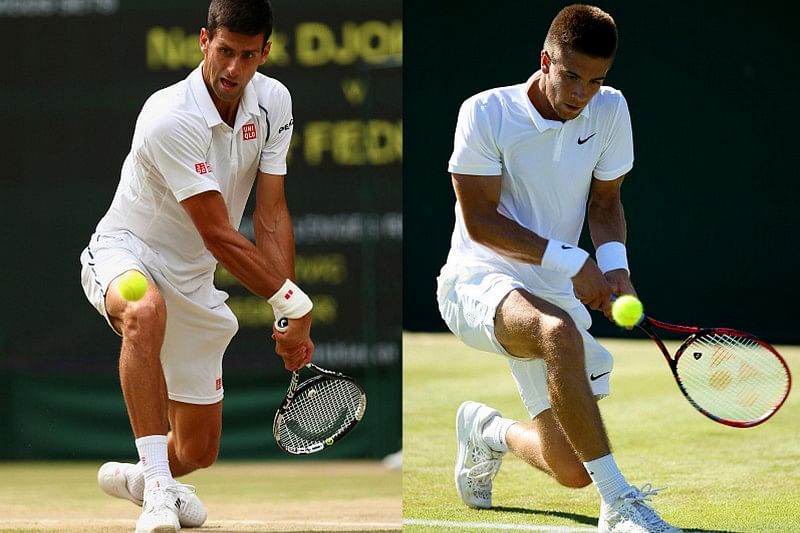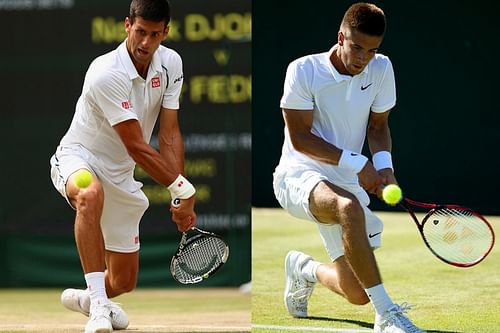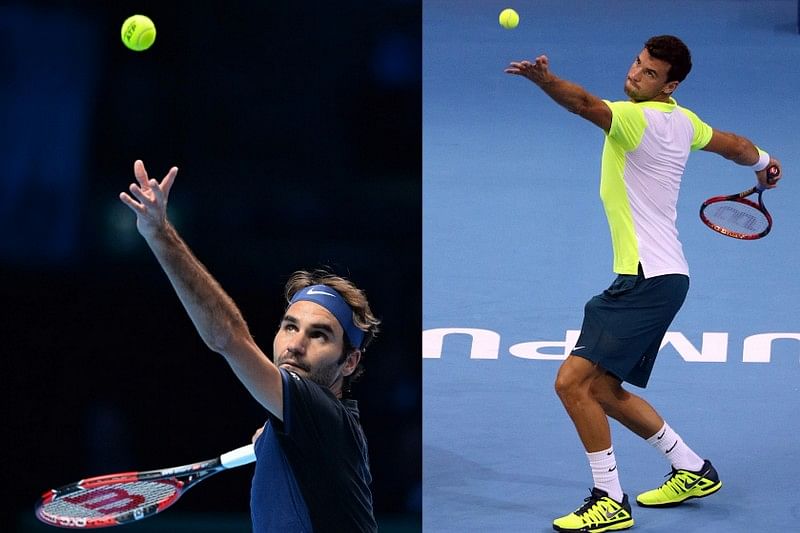
Of Baby Federer, Baby Djokovic and the saga of endless comparisons

Croat teenager Borna Coric has burst onto the scene of late, and although he has not had his breakthrough season just yet, it would be unfair to say he is not a humongous talent.
The 19-year-old has taken victories over top-10s who have been playing on the professional circuit when he was still in primary school, and those victories have been taken in convincing fashion.
Most recently, the teen took a stunning 6-1, 6-3 victory over World No. 2 Andy Murray at the Dubai Duty Free Open last year – and in doing so became the first ever teenager to progress to the semi-finals of the event since former World No. 1 Rafael Nadal did so in 2006 at that exact age.
He has displayed a well-rounded game, with some seamless movement and strong service. Key to Coric’s game have been his quick reflexes, exhibited strongly in his victory over Murray, with the teen managing quick reactions and returns off near-impossible shots from the Scot’s racquet.
Coric’s game has been compared so closely to the World No. 1’s that the young Croat has become known in tennis circles as ‘Baby Djokovic.’ Fans and enthusiasts alike have been drawing that comparison since 2014, when Coric first burst onto the international scene.
It’s a moniker both parties acknowledge and favour. The Serb, who has been ruling the sport for a number of years now, has not only watched Coric’s game, but admires it and sees several similarities to his own – and said as much even before Croat’s upset of Murray.
Having beaten Rafael Nadal only 4 months prior, Coric had been on song, and in February of last year, Djokovic described the youngster as “...definitely one of the most talented players right now the world.”
In what will have been extremely high praise for Coric, Djokovic said that he “...felt like I was practicing with myself” whilst sparring on court with Coric on multiple occasions. “Very similar game.”
Indeed, watching their games closely, the similarities are evident. Coric’s stance is identical to Djokovic’s, with the youngster even adopting similar angles to serve – and their serves are very closely similar.
Both players have a similar double-handed backhand, with the positions they adopt on their racquets mirroring each other.
Coric also tends to attack his opponents with a very acutely-angled forehand, much like Djokovic does – sometimes returning serves from the bottom end of a nearly flat racquet.
Neither runs across court, with both preferring to attack and defend from the baseline as they adopt a shuffling movement around it in their cross-court movement.
Baby Federer

Meanwhile, for a Baby Djokovic, there is also a Baby Federer. Bulgaria’s Grigor Dimitrov may be significantly older than Coric, but he mirrors Federer as Coric does Djokovic.
Like the Swiss, Dimitrov extends into a full body reach very reminiscent of the GOAT, and emulates Federer in the way he rushes the net immediately after serving, although this is not necessarily in an effort to replicate the SABR.
Unlike in the case of Djokovic and Coric, however, the ‘Baby Federer’ moniker is one neither enjoys. As early as 2013, when the moniker had surfaced, Federer told reporters he found it “annoying” after defeating his counterpart at the Swiss Indoors tournament in Basel that year.
“I hope people don’t call him Baby Fed so often anymore,” Federer told reporters. “At first it’s funny, but it gets annoying.”
That same year, Dimitrov himself lashed out at the comparisons. “...It's something that is definitely not what the other person is, so I'm trying to build up my own style and when I'm on court, I do my own shots. I think that's eventually what everyone will see,” he said in an interview in 2013.
The following year, he ascended to his highest-ever ranking of 8th, but has since slid to 28th and had a slew of disappointing results last year.
Dimitrov’s only finish of note in 2015 came at the Round of 16 at the Australian Open, where he stretched eventual quarter-finalist Andy Murray to five sets before an eventual loss.
Since then, he has been unable to move past the Round of 32 at any majors tournament, with his highest tournament finish at the semi-finals of an ATP250 event.
Coric, meanwhile, has been racing up the rankings, and although he has dropped from his career-highest so far, 33, he still sits at a comfortable 44th spot in the ATP rankings, and is the youngest player in the top 50 (and the second-youngest in the top 100 after Germany’s Alexander Zverev).
He’s upset a long list of players this year, and despite tough draws at majors and masters events, has managed close finishes each time, with Rafael Nadal (at the US Open) and Stan Wawrinka both dropping sets against the young talent, who took higher-ranked Italian Andreas Seppi to five sets at Wimbledon.
It appears the encouragement, and Coric’s own humility so far, have helped him not only live up to the massive shadow he looms in, but also break out of it in his own way. Far too many players across sport have been quite unable to do so, and it appears Dimitrov himself is one.
Another example is cricketer Aavishkar Salvi. Successful in first class cricket, the Maharashtra native was compared repeatedly to legendary Australian fast bowler Glenn McGrath. He would end up being capped a total of 4 times for India with average results, and has since been restricted to the first-class format.
Are nicknames, monikers and really beneficial? One could argue they could go either way, but it appears to be largely down to the humility of the player in question. Constant comparisons could drive a player to revel in them, strive to greatness and work even harder - as Coric has – or, as Dimitrov appears to have done, in an effort to shun it, grown complacent with comparisons to the greatest in the game and gone to seed.
Although Dimitrov is still higher-ranked than Coric, it is the significantly younger player who is on a rapid ascent - quick enough that Baby Djokovic (now teenage Djokovic, perhaps?) could take on the real deal soon.